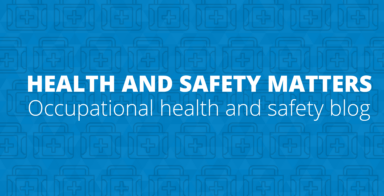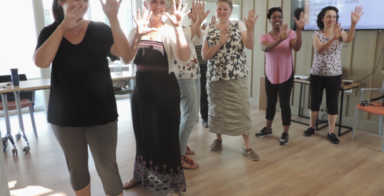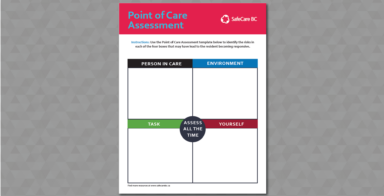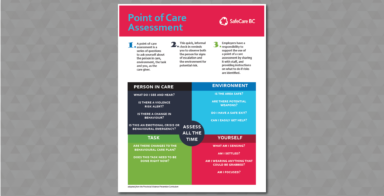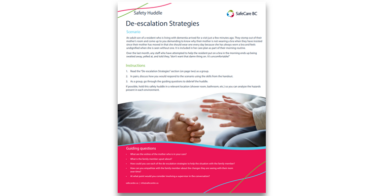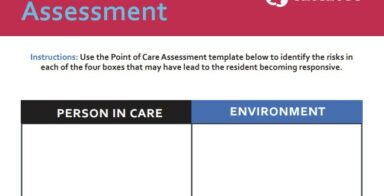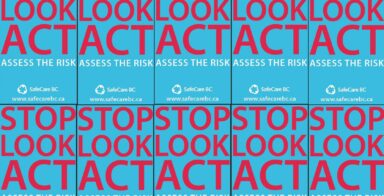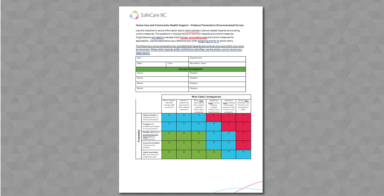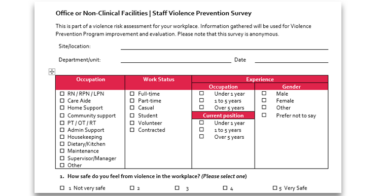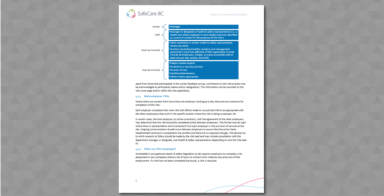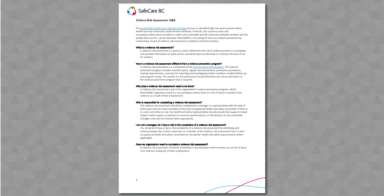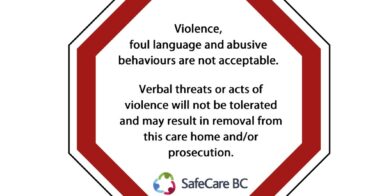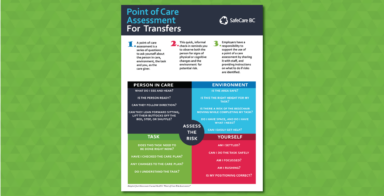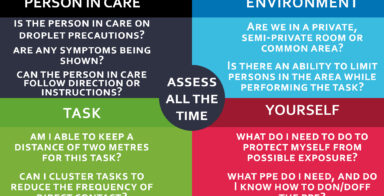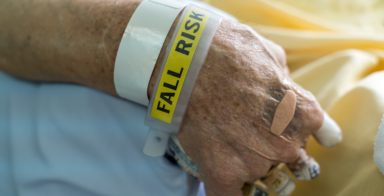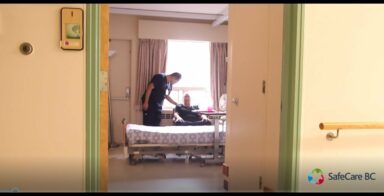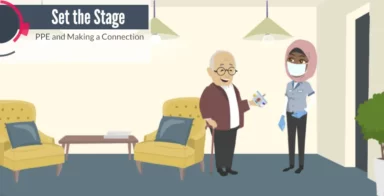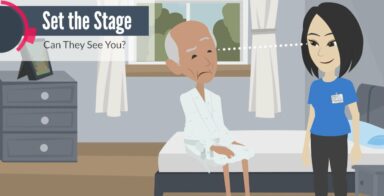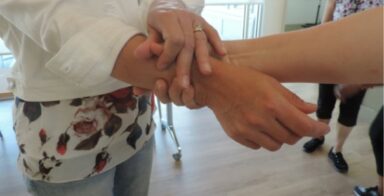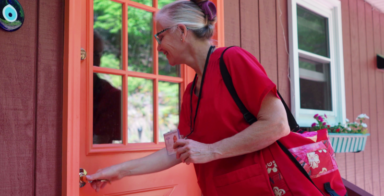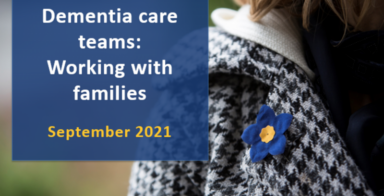Alzheimer’s disease and related dementias | Understanding behaviours related to dementia – a guide for care workers
Understanding dementia
- Dementia is an umbrella term with many subtypes, such as Alzheimer’s disease, vascular dementia and frontal-temporal dementia. The most common type (64%) is Alzheimer’s disease.
- Most dementia is non-reversible and progressive.
- Each person’s journey is different.
- Changes in the ability to function and think vary, depending on stage and type
- Cognitive losses result in:
- Impaired ability to learn, remember information and concentrate
- Decreased ability to solve problems, make decisions and use good judgment
- Increased difficulty communicating and reduced ability to care for self independently
Goals of care
Care for persons with dementia aims to achieve the same goals whether at home or in residential care:
- Safety of the person, family and caregivers
- Respect and dignity for the person
- Maximum independence and ability to function
- Optimal quality of life for the older adult, including freedom from anxiety, agitation, fear and
loneliness
In the home, ensure a safe environment, create a routine that works for the older person, and facilitate rest and respite for family caregivers.
In long-term care, design the environment to make the most of quality of life (e.g., safe access to outdoor space); ensure that approaches to care are flexible and person-centred.
Complications of dementia
- Dementia affects behaviour and mood. Many persons with dementia will develop Behavioural and Psychological Symptoms of Dementia (BPSD).
- The nature of BPSD includes:
- Symptoms such as anxiety, depression, agitation, reversed sleep patterns, hallucinations
- Repetitive behaviours such as repeated questions, rocking, pacing, restlessness, crying, calling out, repeated communication or actions (e.g., tapping fingers)
- Socially difficult behaviours such as screaming, resistance to care and verbal outbursts.
- Behaviours arise from brain damage caused by dementia and can be triggered by unmet needs or the environment. Behaviours are seldom unpredictable.
A new way to understand behaviours
- In dementia, all behaviour has meaning. When words are lost, communication becomes behavioural. Every behaviour has an underlying cause.
- Behaviours are the older adult’s best attempt to cope with a confusing and threatening environment.
- Words like “aggressive,” “disruptive,” “challenging,” “excessive,” and “resistive” are labels that have negative meanings and focus on the behaviour instead of the unmet need. Focus on the underlying cause of the behaviour.
- Recognizing behaviours as “responsive” and “protective” helps guide care:
- Responsive behaviours indicate an unmet need such as hunger, pain, thirst, need to void, boredom, sensory overload or fatigue.
- Protective behaviours arise from the person’s need to protect themselves against feelings such as frustration, failure, embarrassment, confusion and fear.
- The care team’s focus is to create an environment in each person’s best interests:
- This environment includes physical surroundings that support the older adult’s limitations and enable them to continue using existing strengths.
- The facility must also sustain a culture or philosophy of care that enables staff to adapt routines to individual needs.
Prevention is key: know the person
- Responsive and protective behaviours can often be prevented by eliminating environmental stressors. Look for triggers and patterns. Build this knowledge into the individualized care plan.
- Change the environment as needed. Changing the environment is easier than changing a person with dementia. For example, reduce noise or other stimulation, and provide a quiet space.
- Learn about the person’s background, usual routine, personality, the name they prefer to be called, preferences, dislikes, strengths, fears, and what comforts them when distressed.
Communication approach
- A person-centred philosophy of care includes a communication approach that aims to be positive, with a focus on connecting rather than correcting.
- Always look friendly. Don’t rush or hurry care—it will take longer in the long run.
- Use a positive tone of voice. Guide rather than control or tell. Distract rather than confront.
- Don’t start sentences with “No” and “Don’t,” as this increases resistance. Never argue or scold.
- Avoid “elderspeak” (e.g., “dear” or “honey”), the childish style of communication that some people use when speaking to older adults with dementia. This makes most people angry.
- Simplify talk and use short sentences. Ask one question at a time and limit choices to ones the person can successfully make.
- Use non-verbal language whenever possible (e.g., smiling, nodding, gesturing, cueing).
- Avoid laughing near a person with dementia who is suspicious, paranoid or delusional—you may be misinterpreted as threatening, which could lead to a negative reaction.
- Communication should enhance a person’s self-respect and decrease uncertainty and anxiety.










